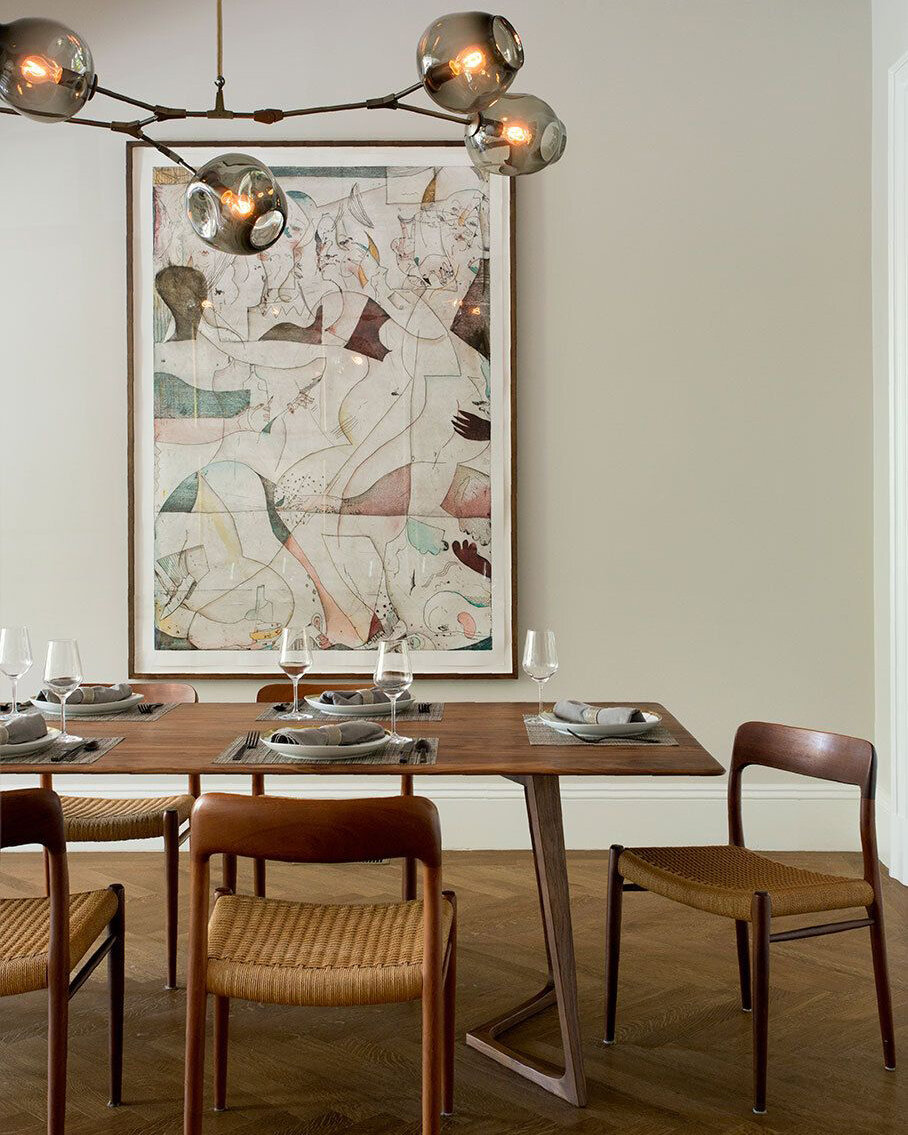Today is all about clearing up the confusion! When it comes to interior design terms, I realized there are a plethora of names, terms, and descriptors that describe similar objects but have two different meanings. Like cane vs wicker or modern vs contemporary. So what’s really the difference between these similar terms? Well, let’s get into that…
VINTAGE vs ANTIQUE
VINTAGE
Source: Tanya Capaldo Designs
ANTIQUE
Source: House & Home | Designer: Mélanie Cherrier
While vintage and antique both refer to the age of an item, they define different time frames. Antique is appropriate for items aging 100 years or older. Vintage is a little harder to define, but is most often used for items aging 20-99 years old.
SIDEBOARD vs BUFFET
SIDEBOARD
Source: Chris Loves Julia
BUFFET
Source: Lulu and Georgia
Both are cabinets used for storage and they’re technically the same item. However, the placement of the cabinet within your home defines what term you should use. A cabinet in the dining room can be referred to as either a sideboard or buffet. A cabinet in the living room should be called a sideboard, not a buffet.
EMBROIDERY vs APPLIQUE
EMBROIDERY
Source: Maggie Jos Studio
APPLIQUE
Source: West Elm
Embroidery is a design sewn onto fabric using thread. Applique is a sewing technique where one piece of fabric is sewn onto another piece of fabric creating a design or pattern.
DUVET vs COMFORTER
DUVET
Source: Studio McGee
COMFORTER
Source: Nadine Stay
We all know what a comforter is – a thick, quilted, and fluffy blanket. A duvet is a quilted comforter insert that you place inside a duvet cover. And a duvet cover is essentially just a double sided sheet.
EMPIRE SHADE vs TAPERED DRUM SHADE
EMPIRE SHADE
Source: Studio McGee
TAPERED DRUM
Source: Jean Stoffer Design
Both have a cone shape but the sharpness of the taper determines the appropriate name. Shades with a top diameter that are roughly half the size of the bottom are considered Empire shades. Tapered drum shades have less of a taper with the bottom diameter just a smidge wider than the top.
CANE vs WICKER
CANE
Source: Cane Collection
WICKER
Source: Palecek
Cane comes from rattan vines. The outer layer of the vine is removed and formed into strands which are then woven into sheets. Cane is typically seen on chairs and buffet cabinets. Wicker on the other hand is made from plant sticks or branches and is woven to form an object like a chair or basket.
MODERN vs CONTEMPORARY
MODERN
Source: Design Milk
CONTEMPORARY
Source: Tom Robertson
Modern design refers to a time period from the early to mid 20th century. It features clean lines, warm woods, earthy tones, and simplicity. Contemporary design doesn’t refer to a specific time frame but rather the current styles and trends. It’s an always evolving style which makes it particularly difficult to define. However it is characterized by combining modern, art decor, and even futuristic designs. It’s not uncommon for contemporary homes to showcase a neutral color palette with a single pop of color and metal, concrete, plastic, or glass materials. The stark contrast and clean lines create a minimal and sometimes cold atmosphere.
REEDED vs FLUTED
REEDED
Source: Ornamental Mouldings
FLUTED
Source: Ornamental Mouldings
Reeded details feature convex, or outward curves while fluted details feature concave, or inward curves. Reeded and fluted details can be seen on columns, mouldings, glass, furniture, and pretty much everything!
HUE vs VALUE
Both terms refer to color. Hue refers to a color in its more pure state. I.e. a hue is a primary color that doesn’t have any additional colors added to it. Value refers to the lightness or darkness of a color.
SHADE vs TINT vs TONE
SHADE
TINT
TONE
Again, all three terms refer to color. “Shade” refers to a color that has black added to it creating a darker value. Tint refers to a color that has white added to it making it a lighter value. Tone refers to a color that has gray added to it creating a desaturated color.
WAINSCOTING vs BOARD & BATTEN vs BEADBOARD
BOARD & BATTEN
Source: Chris Loves Julia
BEADBOARD
Source: I Spy DIY
Wainscoting is a broad term used to describe decorative paneling lining the bottom half of a wall. The style of paneling you use determines the type of wainscoting it’s called. Board & Batten consists of vertical wood strips spaced evenly on the wall. (Typically anywhere from 12″-16″ apart). Beadboard is a style of paneling that features skinny vertical wood slats and vertical grooves. This is often seen in bathrooms.
BUFFALO CHECK vs GINGHAM
BUFFALO CHECK
Source: Joann Fabrics
GINGHAM
Source: Joann Fabrics
Both patterns are in the plaid family however Buffalo Check, also known as Buffalo Plaid, features large checker squares with 2 alternating colors (typically red and black). Gingham on the other hand features small checker squares often with white/red or white/blue color combinations.
I hope this clarifies a few terms for you!
Leave a Reply Cancel reply
DO YOU WANT
The Inside Scoop
Where behind the scenes, exclusive advice, and candid conversations are sent straight to your inbox every week.




























This is great! Love seeing knowledgeable experts in the field, terms are important!
I’m so glad you enjoyed it! Thanks for reading! 🙂
This is so helpful! I graduated from architecture school in 2018 and have worked in an architecture firm since then, and no one has ever given me so much clarity on language for interior finishes! Thank you!
Oh I’m so happy this was helpful! Thanks for the kind words! 🙂